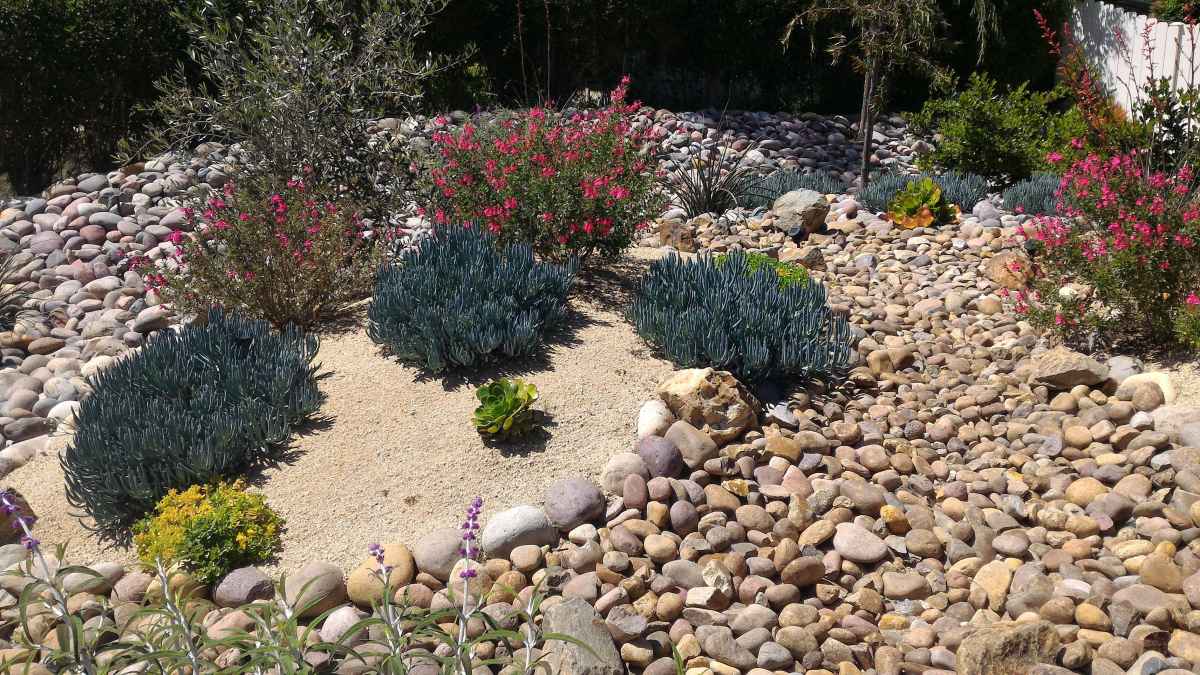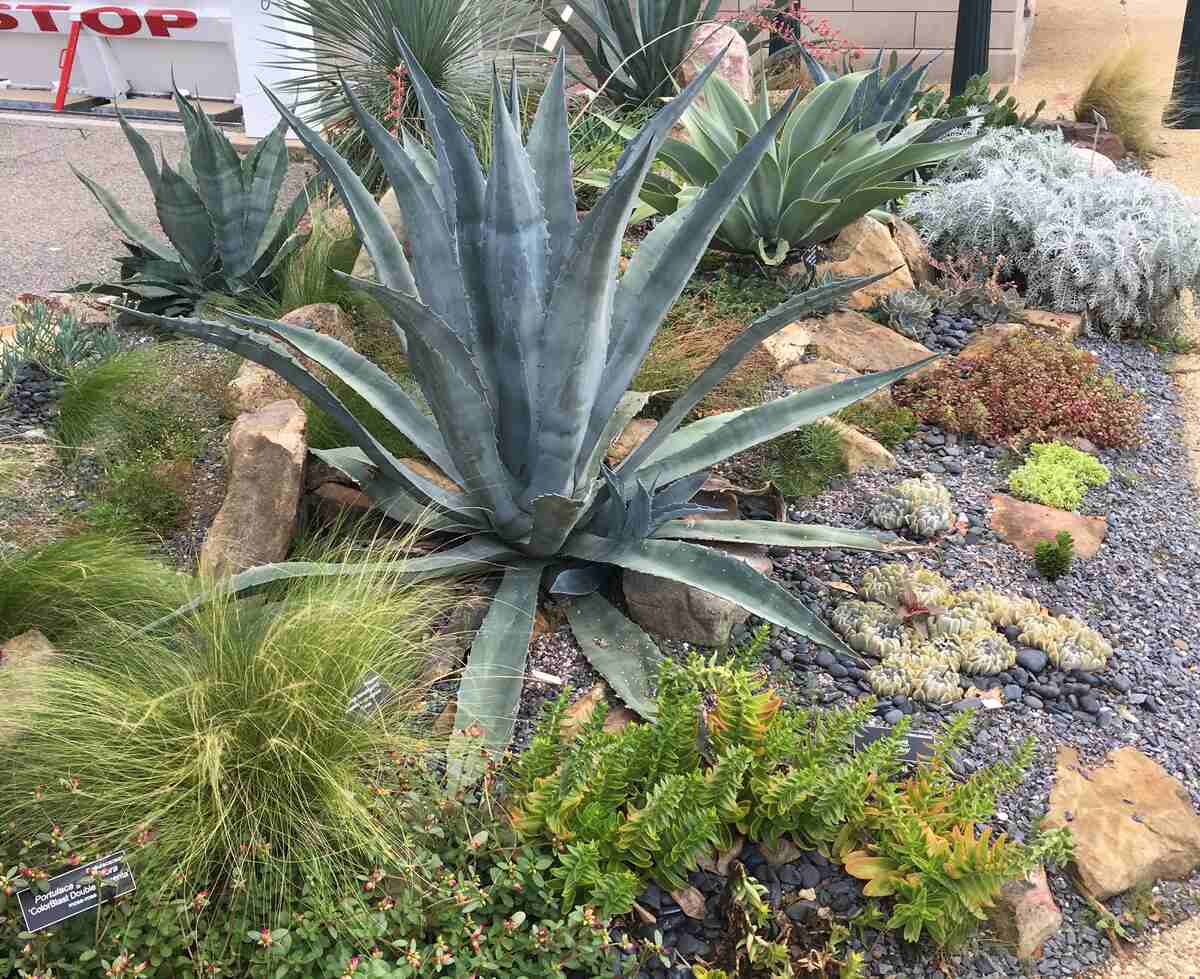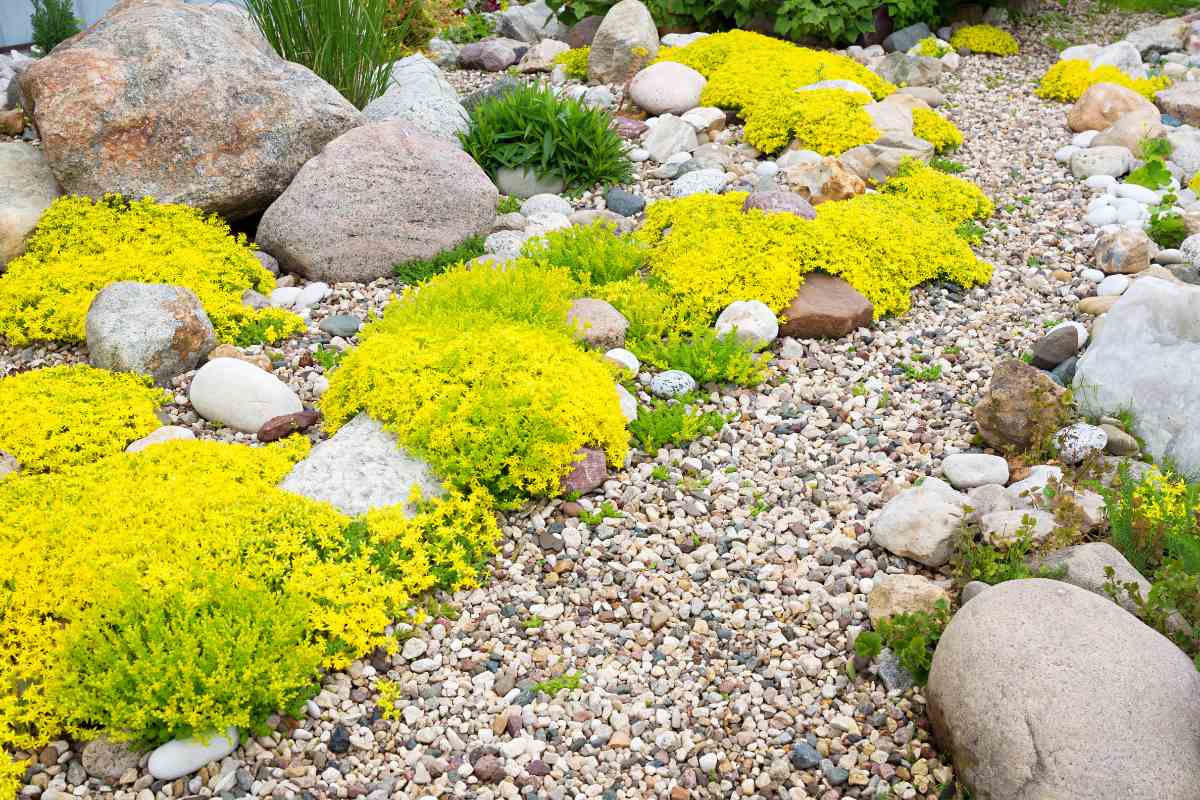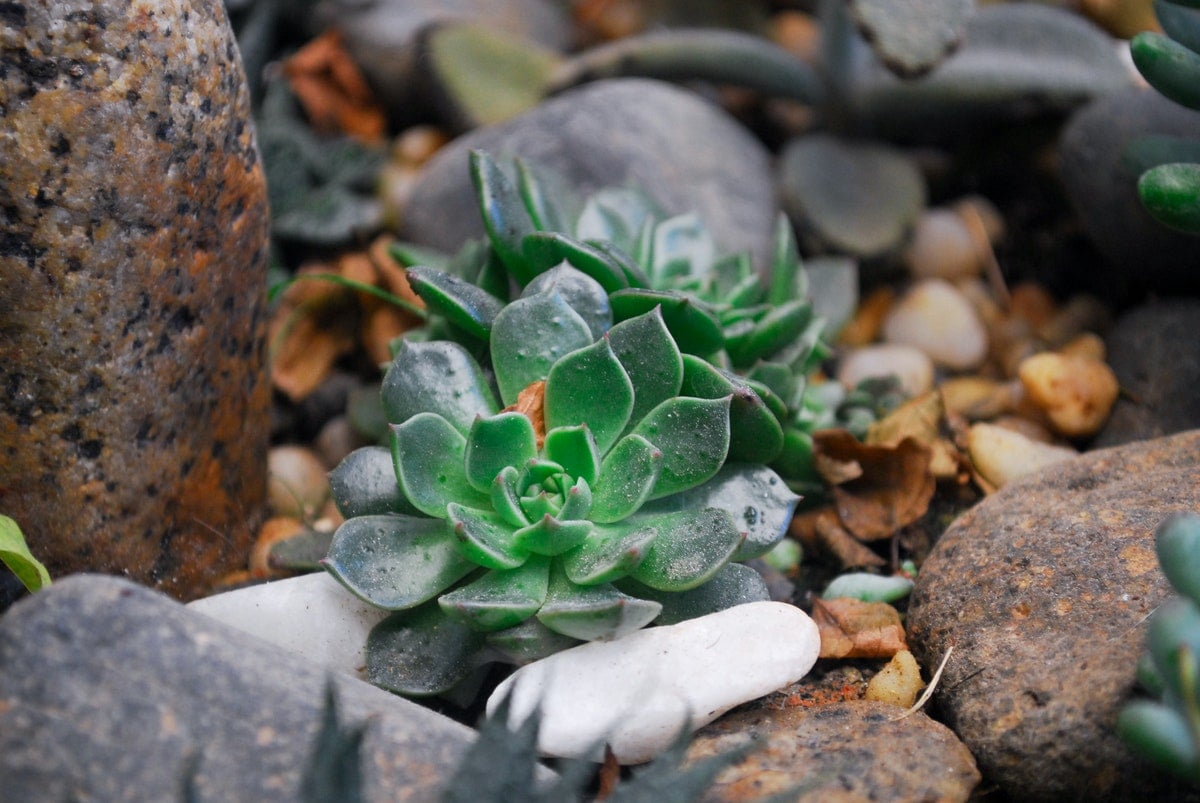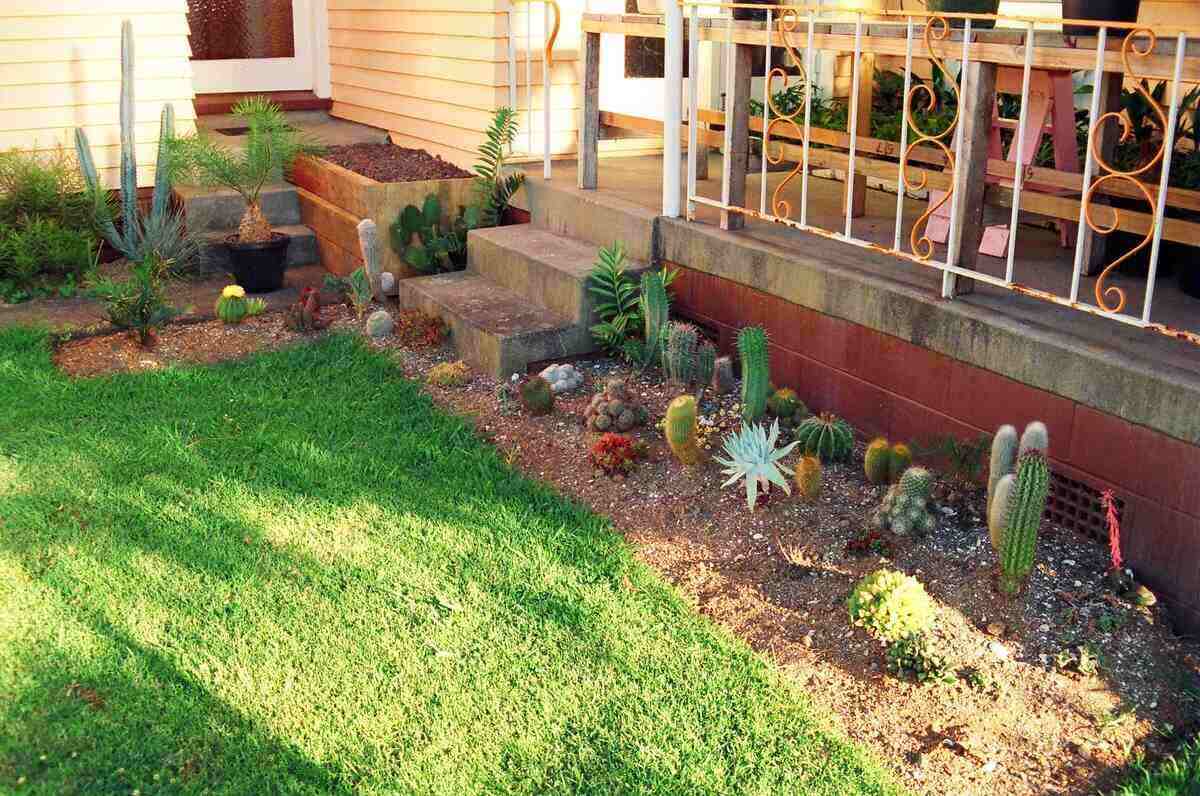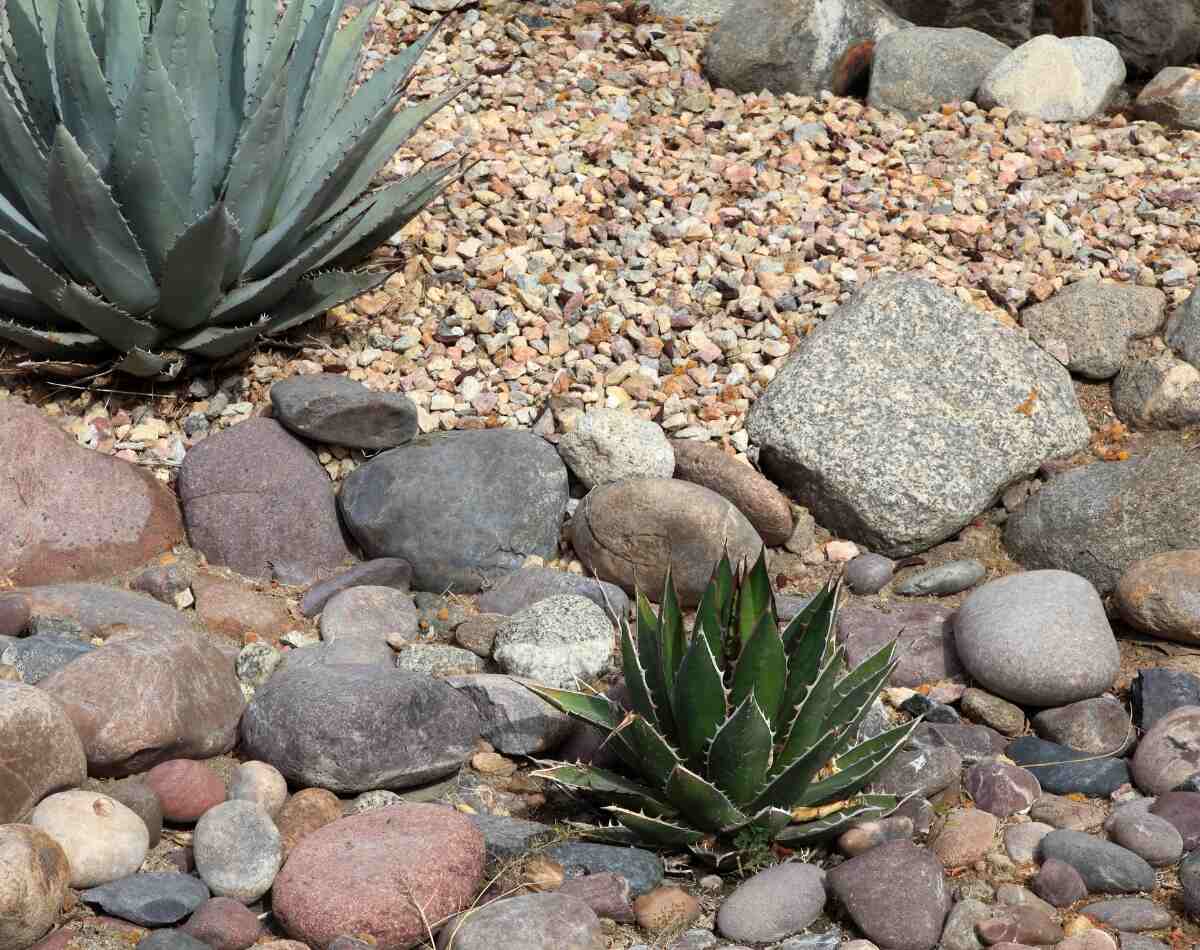
Planning to convert your garden into a water-wise landscape? There are countless xeriscaping ideas for your yard to choose from, and we cover the most popular right here.
Xeriscaping can help you keep a beautiful garden with low water bills and less work. It uses native plants, mulch, rocks, and drip irrigation systems to limit watering to a minimum. Most xeriscaping plants are also slow-growing and need trimming just once a year.
Let’s see some of the most popular landscaping ideas you could use for your xeriscape design and why to consider them.
- What is Xeriscaping?
- 1. Design with Mulch
- 2. Lean on Ornamental Grasses and Groundcovers
- 3. Xeriscape with Paver Walkways
- 4. Low-Maintenance Rock Gardens
- 5. Enjoy Mediterranean Fragrances
- 6. Plant Succulents in Containers
- 7. Get Creative with Xeriscaping Annuals
- 8. Save Time with Perennials
- 9. Gorgeous Colors with Pollinator Gardens
- 10. Shift Towards a Rain Garden
- 11. Add a Rainwater Recycling System
- 12. Use Drip Irrigation
- 13. Backyard Xeriscape Ideas
- 14. Xeriscaping for Your Dog
- What Are The Seven Principles of Xeriscaping?
- FAQ
What is Xeriscaping?
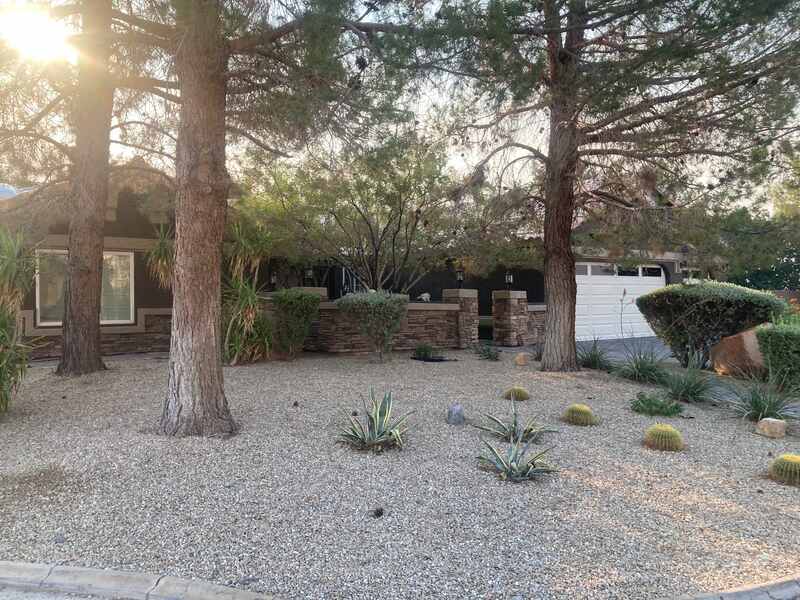
Xeriscape means “dry landscape” and is a concept that helps homeowners create beautiful yet low-maintenance landscapes in dry environments.
Designs vary a lot around the country, depending on climate, soil, local plants, and the landowners’ preferences. Your garden could look like an exotic desert landscape with cacti and huge rocks or more like a cottage-style blend of grasses and colorful wildflowers.
Note: If you’re unfamiliar with xeriscape landscaping, you can learn more about it in our detailed guide “What is Xeriscaping?” It even includes some xeriscape design ideas and pictures for inspiration.
1. Design with Mulch

There’s no xeriscaping without mulch. It slows down evaporation and keeps the soil cooler, so it’s essential to this gardening style. Spreading a layer of organic or inorganic mulch over the soil also:
- Improves fertility and structure
- Limits weed growth
- Adds curb appeal, giving a beautiful, finished look to your landscape design
Pine bark and crushed stones look very different. When you choose a mulch type, consider the image you want to create:
- Stone mulch fits perfectly in rock gardens and designs created around cacti and succulents.
- Consider gravel for spreading around lavender and rosemary in a Mediterranean layout.
- Add shredded bark to cottage xeriscaping and layouts inspired by classic English gardens.
Pro tip: Some mulch has added dyes, pesticides, or herbicides toxic to soil and wildlife. Make sure you choose natural, clean options. Find out more helpful tips in our complete guide to mulch.
2. Lean on Ornamental Grasses and Groundcovers
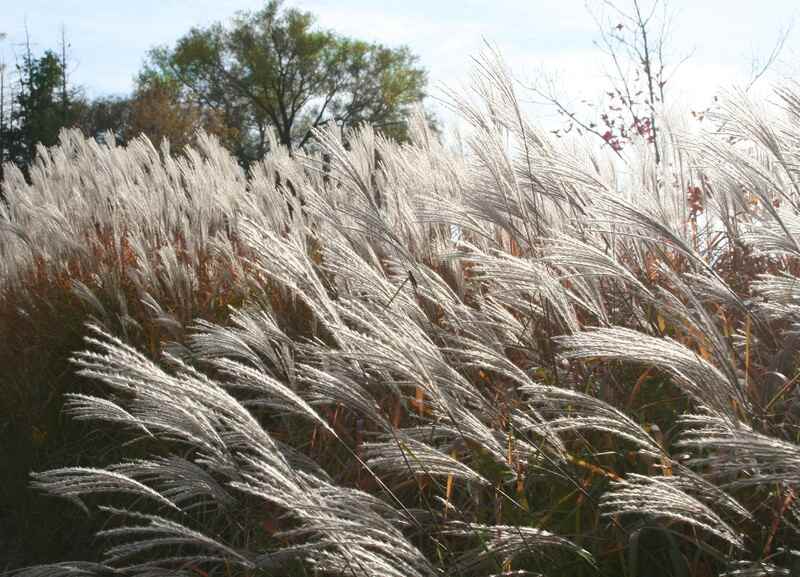
Take a deep breath and say goodbye to the lush grassy lawn. It’s the fastest way to create a xeriscape design that thrives with little water. You reduce water usage by replacing the lawn with gravel, sand, or stone in high-traffic areas.
Cover the rest of the ground with soft, low-growing groundcovers and ornamental grasses, such as:
- Creeping thyme
- Lantana
- Silver carpet
- Zoysiagrass
- Creeping red fescue
- Sweet woodruff
- Low-lying sedum
- Creeping phlox
They spread quickly, grow healthy with less water, and need just one haircut a year. Mix more species to get the look you want. Keep in mind that drought-tolerant grasses will still need some mowing.
Pro tip: Make sure to choose a low-growing variety. Some species, such as lantana, also have shrub-like cultivars that grow taller.
3. Xeriscape with Paver Walkways

Garden paths can be a great choice if you’re searching for xeriscape ideas for your front yard. They are functional, can be eco-friendly if built appropriately, and aesthetically pleasing. Not only can you walk on them, but they can collect and store rainwater in the soil as they meander through your garden. But how do you do that?
- Avoid compact concrete walkways. They seal the ground and create runoff.
- Choose pavers with space between them. Where you can see the ground, rainwater touches the soil, and it’s absorbed for later use.
- Overlay pavers on crushed stone. This improves permeability.
- Let small plants grow between pavers. They keep the soil moist.
- If pavers seem expensive, go for gravel paths instead.
Pro tips: Vary paver sizes to create a more dynamic design. Choose natural stones, such as bluestone or slate, as they last longer.
4. Low-Maintenance Rock Gardens
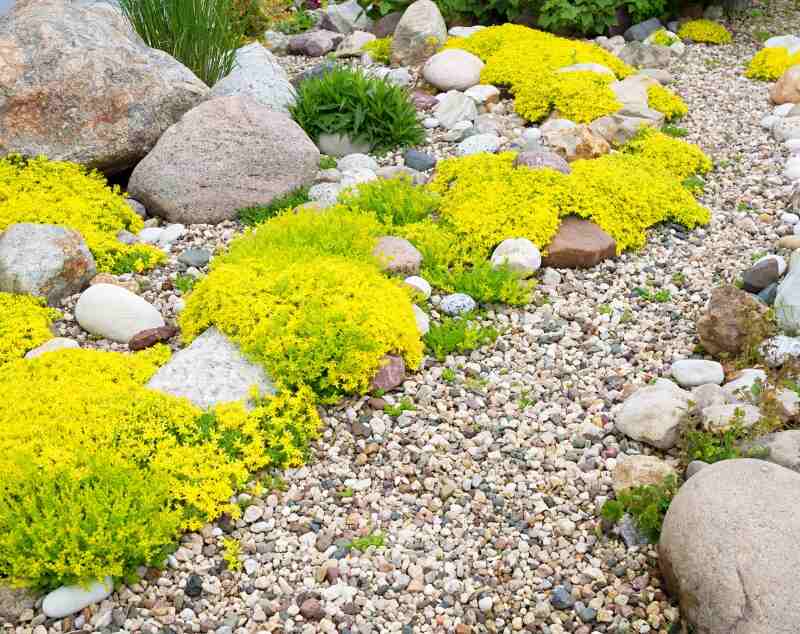
Boulders and rocks prevent evaporation, trapping moisture in the ground. As with any other hardscape element, they are also maintenance-free. To use them in a rock garden, fit more boulders together and create beautiful focal points. Then add plants.
Cacti and succulents are the number one plant option in rock gardens. Wildflowers and drought-resistant herbs can also be used to add variety and visual interest.
But most of all, you’ll love the colorful ground covers cascading over the rocks. Plant creeping thyme, lamium, creeping phlox, or campanula. They will grow beautifully in the tiny crevices between the stones.
Pro tip: To help develop your own xeriscape yard ideas, take pictures of natural rock groupings you like and recreate them in your garden.
5. Enjoy Mediterranean Fragrances
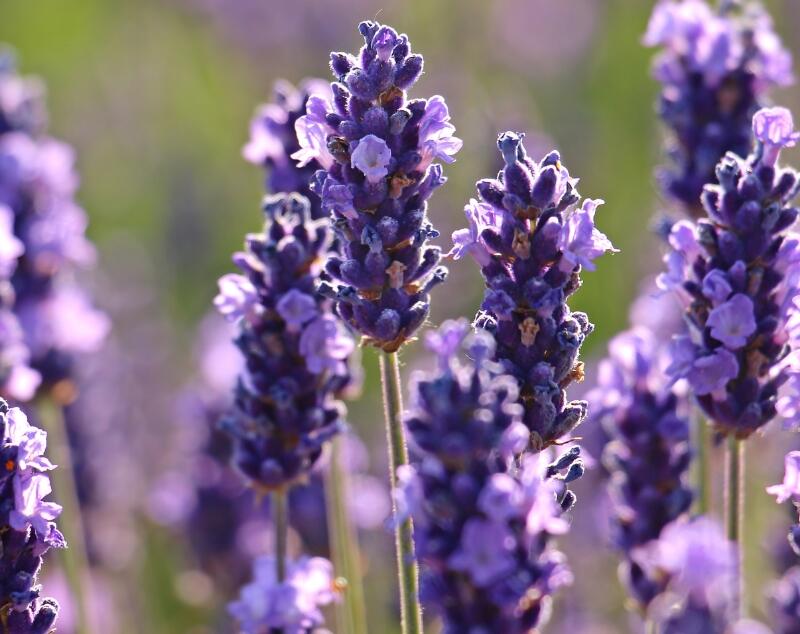
The Mediterranean climate is home to delightful, drought-hardy herbs. Some of the most popular to thrive in full sun and well-drained soils are:
- Thyme
- Rosemary
- Oregano
- Lavender
Incorporate these Mediterranean fragrances to make your xeriscape garden smell amazing without breaking the bank. Using herbs is an inexpensive xeriscape idea that can not only look beautiful but also be used for cooking.
Lavender and rosemary fragrances calm the mind. Thyme and oregano attract bees and butterflies and repel pests. You can also add them to your recipes for delicious flavors, making the Mediterranean style one of the best backyard ideas for culinary aficionados.
Pro tip: Plant lavender along the garden paths to enjoy the relaxing scent during your walks.
6. Plant Succulents in Containers
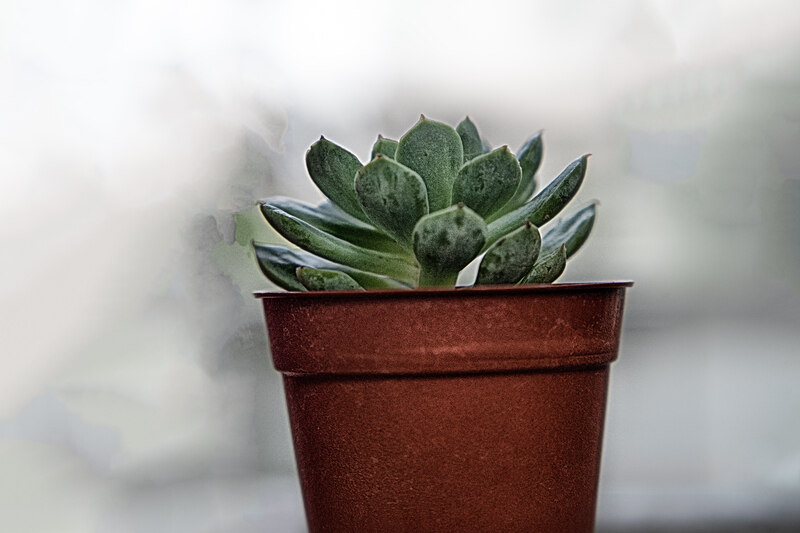
If you want to add plants in containers to your landscape, go for succulents. The soil dries faster in pots, so any other plant will need frequent watering.
With succulents, not so much. They only require water from time to time. Below are popular options when xeriscaping with succulents:
- Cacti
- Agave
- Aloe
- Sedum
- Crassula
- Gasteria
Plants in pots add volume and structure. You can also use them to define areas in your garden. Or, extend the garden towards the deck or porch.
Pro tip: The best pots for drought-tolerant plants are terracotta. The porous material and large hole at the bottom prevent waterlogging and allow the air to flow through the roots.
7. Get Creative with Xeriscaping Annuals
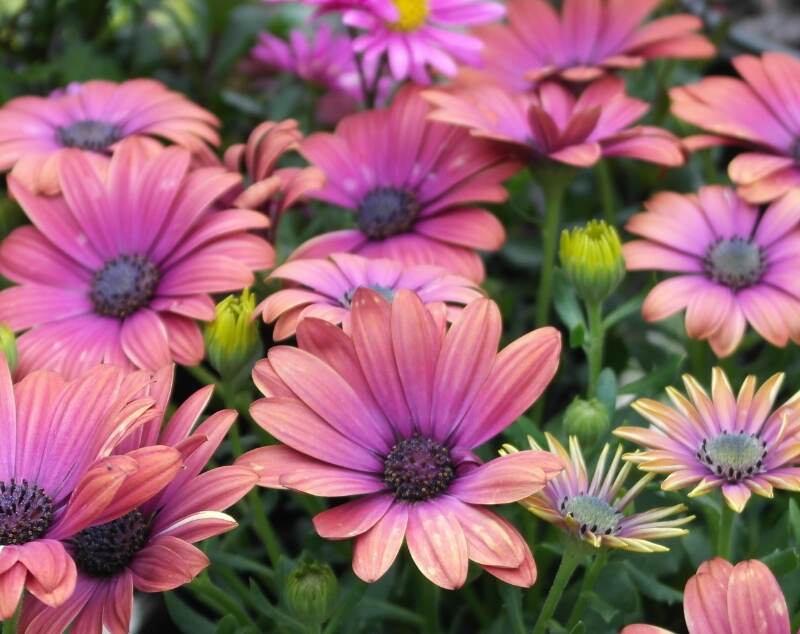
Grant yourself some freedom to change your garden by planting annual drought-tolerant plants. Now you want soft, light, pastel blooms. Next year you might love intense red, orange, and yellow colors in your yard. Who knows?
Annuals last only a year. You seed or plant in the spring. They grow and bloom in summer and fall. And the following year, you start over.
Some of the most beautiful annual species that can thrive in your xeriscape garden are:
- African daisy
- California poppy
- French marigold
- Creeping zinnia
Pro tip: Grouping plants with similar water needs is essential for saving water.
8. Save Time with Perennials
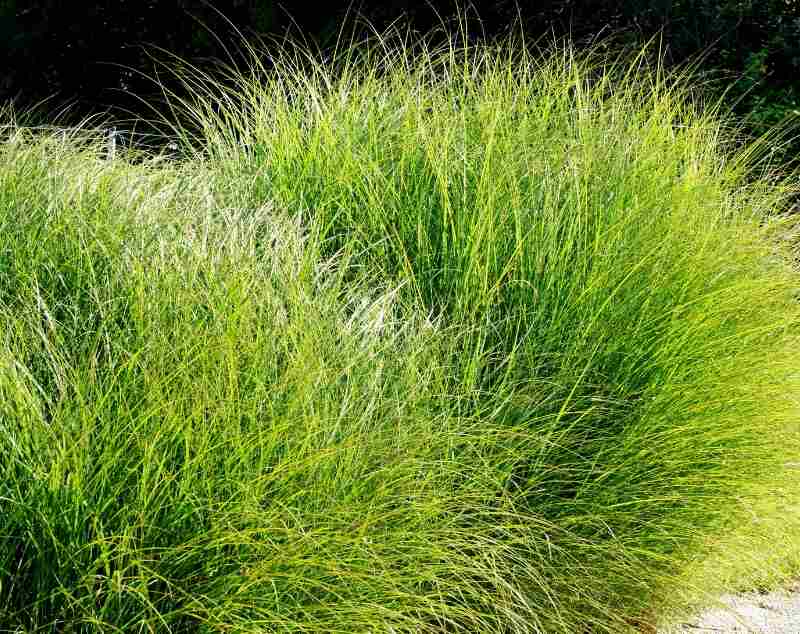
Xeriscaping perennials are here to stay. It’s a long-term commitment, so choose the plant and its place in your garden wisely. Among the most appreciated perennial grasses are:
- Maiden grass
- Switchgrass
- Mexican feather grass
Plant them along the pathways or the edge of a patio in your xeriscape design. As for perennial wildflowers and shrubs to fill your garden with, try out:
- Russian sage
- Coneflower
- Shasta daisy
- Yarrow
- Verbena
- Blue false indigo
You plant once, water them until they’re established, and trim them from time to time. Spring after spring, they will grow and bloom all over again.
Pro tip: Check which plants grow well together and place them in the same area.
9. Gorgeous Colors with Pollinator Gardens
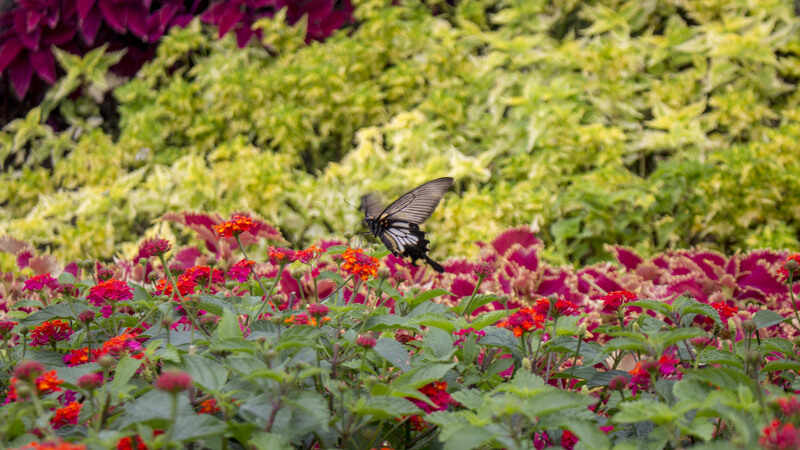
Protecting the bees and other pollinators has become as crucial as saving water. So mixing the two creates a unique eco-friendly landscape architecture.
If you enjoy hummingbirds, lady beetles, and butterflies in your garden, consider flowering plants such as:
- Echinacea
- Lemon balm
- Hummingbird mint
- Black-eye Susan
- Caradonna
- October skies
- Dianthus
- Coreopsis
They are drought-resistant plants that look pretty in flower beds and edging pathways along the garden or under xeric trees.
Pro tip: Check each plant’s flowering period. Mix the plants to have beautiful colors in your garden all year round. Bees and other pollinators love bright colors!
10. Shift Towards a Rain Garden
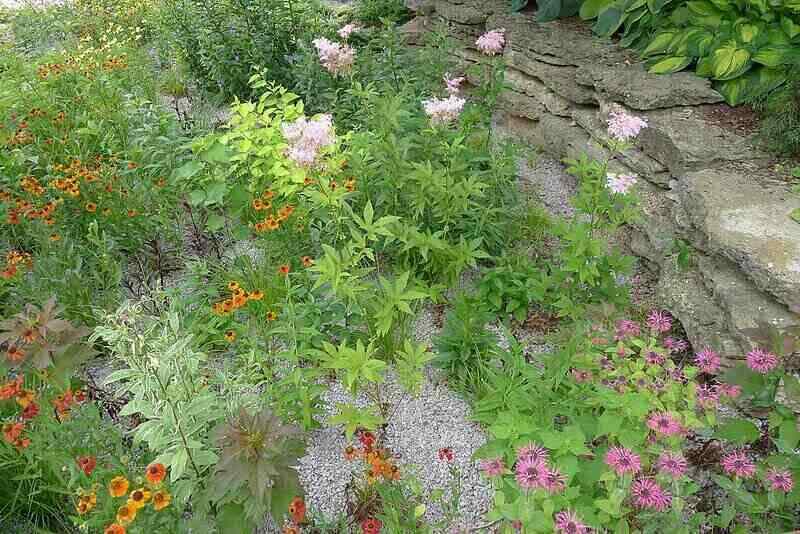
Consider a rain garden if your backyard is sloped or has shallow depressions. Rain gardens are typically put in low spots to collect stormwater.
Runoff flows from nearby areas like the roof, driveway, patio, or other impervious surfaces. It dries out in less than 48 hours. But since the soil can get quite moist, you need plants able to tolerate both dry and wet ground, such as:
- Swamp milkweed
- Marsh marigold
- Blue flag iris
- Wild petunia
You can find out more about designing a rain garden DIY in our guide.
11. Add a Rainwater Recycling System
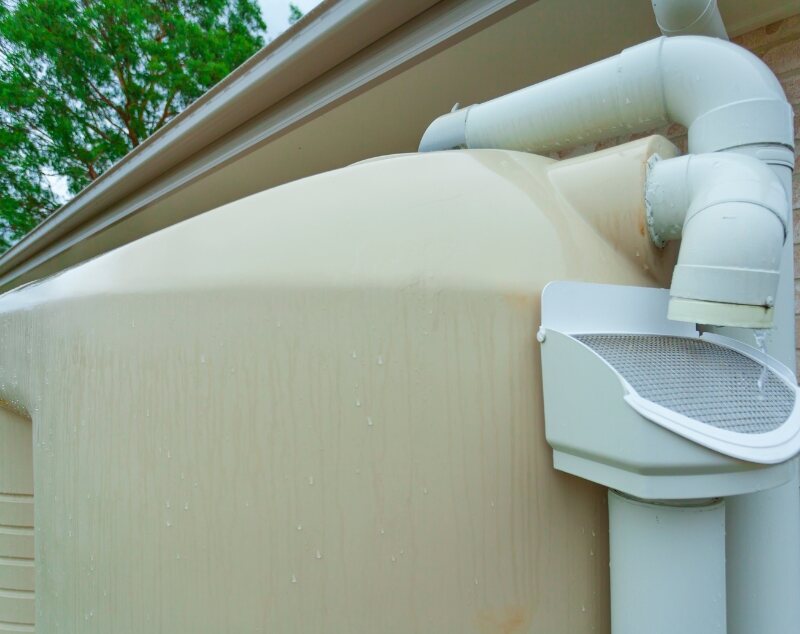
Rainwater is free and often more healthy for your plants than tap water. Besides collecting it in rain gardens, consider adding a rainwater harvesting system to your design.
Redirect runoff from roof-like surfaces and store it in barrels, tanks, or cisterns. You can then use it to irrigate your plants.
Pro tip: Check this interactive map to learn about rainwater harvesting regulations in your state.
12. Use Drip Irrigation

Catching and storing free rainwater is only one part of the xeriscaping secret. The other is how you spend that water. Most homeowners feel comfortable with sprinklers, but they waste a lot of water through evaporation.
Shift to drip irrigation to water your plants snipper-style. Soaker hoses, bubblers, and drip tubes with emitters deliver each drop of water near the plant and its roots. They are also a more discreet presence than traditional sprinklers.
13. Backyard Xeriscape Ideas
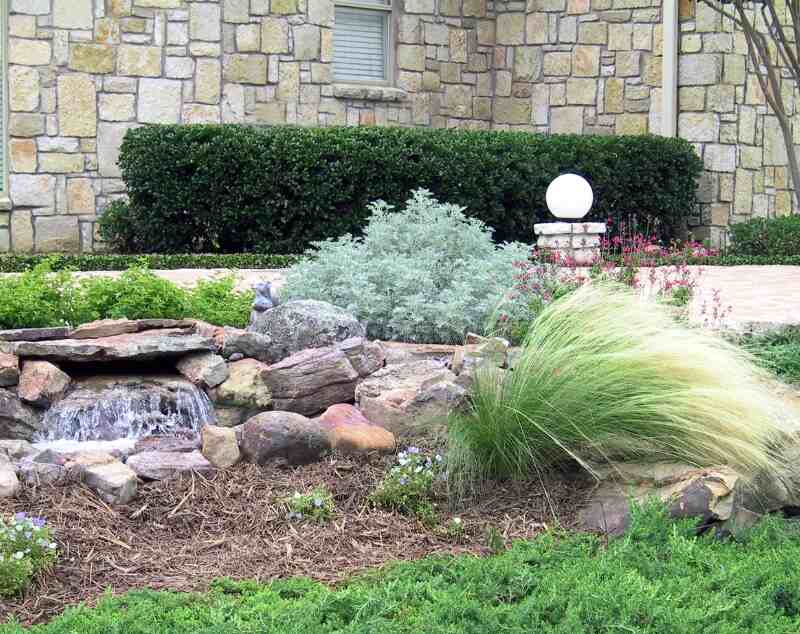
You should avoid sitting outside during heat waves. But what about cool summer mornings and evenings? Or through spring and fall? Plan to spend time in your xeriscape backyard. Enjoy the greenery, smell the flowers, and breathe the fresh air. Design your backyard landscaping with some features for your comfort:
- Plant drought-tolerant trees and tall shrubs for some shade and privacy.
- Add benches along the garden paths.
- Create sitting areas to extend your living space.
- Put in a patio or a deck topped with a lattice for extra shadow.
- Install a fire pit to make the backyard welcoming in late evenings.
Pro tip: Make evergreen drought-tolerant shrubs a must-have in your outdoor space. They will keep the garden vibrant all the way through the winter.
14. Xeriscaping for Your Dog

Remember your furry friend! Dogs enjoy a lot of natural surfaces for running, playing, and exploring. So they won’t miss the grassy lawn so much. Here’s what you can use for xeriscaping with a dog in the house:
- Cedar chips, pine bark, straw, and gravel work well as mulch (make sure you choose only organic options).
- Decomposed granite, soft pebbles, and hard sands make friendly paths for their pads.
- Brick, flagstone, and sand pavers are also good.
To replace the actual turf grass, use drought-resistant low-growing plants. Some safe options are:
- Creeping thyme
- Silver carpet
- Snow-in-summer
Pro tip: Check which xeriscaping plants are poisonous to dogs before buying and adding them to the landscape.
What Are The Seven Principles of Xeriscaping?
Xeriscaping is a concept based on seven principles:
• Plan your garden design well in advance.
• Amend the soil to improve texture and fertility.
• Choose the right drought-tolerant plants for your climate and soil and group them by similar water and light needs.
• Install water-wise targeted irrigation, such as drip irrigation.
• Limit turf grass areas and use hardscapes or low-growing groundcovers instead.
• Use mulch to slow down evaporation.
• Maintain your xeriscape garden.
FAQ
How Do You Xeriscape on a Budget?
The best solution for affordable xeriscaping is to grow plants from seeds. You can also ask for seedlings from your neighbor and look for small plants at local nurseries. Also:
• Search for sources of free mulch.
• Buy pea gravel. It is cheaper than other mulch options.
• Reuse any rocks or boulders that occur naturally in your yard.
Other cheap mulch types include pine bark and shredded hardwood mulch. For more information, check out our guide on the cost of mulch.
How Much Does Xeriscaping Cost?
The average xeriscaping project costs $10,000 to $19,000, including materials and installation by a professional landscaper. Depending on the garden size, location, soil quality, design style, and the type of plants you add, you can pay more or less.
If you don’t have the money for a total landscape re-design right now, that’s ok! You can gradually convert your landscape to a xeriscape bit by bit.
What is Zeroscape vs Xeriscape?
Zeroscape is mainly used as a pronunciation error, referring to xeriscape. Sometimes though, it can indicate a particular form of drought-tolerant landscaping that uses very few plants or no plants and requires no water.
What Are The Best Xeriscaping Plants?
There are hundreds of plants to choose from for xeriscape landscaping depending on climate, soil, and what style you want to create. Cacti, agave, aloe, echinacea, creeping thyme, silver carpet, and lavender are most commonly used. Find more examples in our article on the best plants for xeriscaping.
Start Your Xeriscape Garden Today!
Xeriscaping your garden can reduce water and maintenance costs by up to 60%. But it’s not only about the money. You can enjoy a green, beautiful, relaxing garden despite heatwaves and droughts and also help bees and create a welcoming wildlife habitat in your yard. Choose what xeriscaping ideas suit you the best, find a local landscaper, and start your garden today!
Main Image Credit: Solidago / Canva Pro / License
